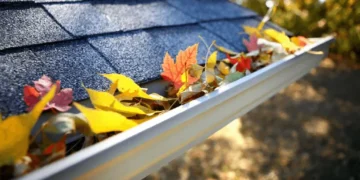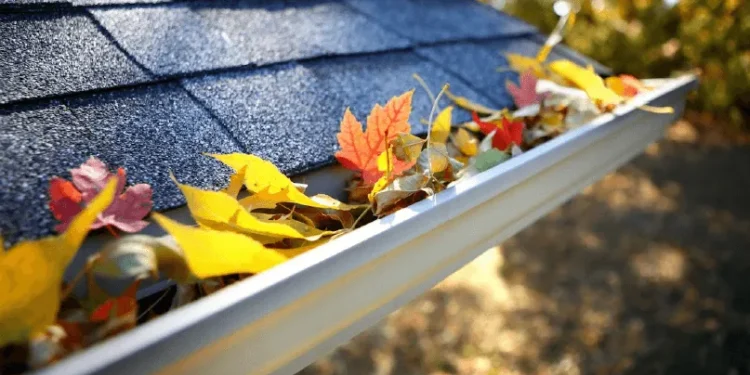Tampa Bay’s subtropical climate brings heavy rain, high humidity, and intense seasonal storms. These conditions put constant strain on home drainage systems, particularly gutters. Over time, even high-quality gutters can wear down from repeated exposure to moisture, debris, and salt-laden air. Regular gutter maintenance protects the system itself and prevents water damage to the roof, siding, and foundation. Understanding how and when to perform proper upkeep ensures that your gutter system continues to function efficiently for years to come.
Understanding Why Maintenance Matters
Gutters are designed to channel rainwater away from the structure of a home. When they become clogged or misaligned, water can overflow, seep into fascia boards, or pool near the foundation. This leads to wood rot, erosion, and, in some cases, structural instability. In a region like Tampa Bay, where rainfall is both frequent and intense, consistent upkeep helps avoid these costly repairs.
Regular cleaning and inspection allow homeowners to identify small issues before they worsen. Sagging, leaks, or loose hangers are often simple to fix when caught early. By maintaining proper water flow, you also reduce the risk of mold growth and staining on exterior walls.
Cleaning Gutters Thoroughly and Safely
The most direct way to extend the life of gutters is through routine cleaning. Leaves, pine needles, and dirt accumulate quickly, especially after storms. For most homes in Tampa Bay, cleaning gutters twice a year, once in late spring and again in early fall, is sufficient. However, properties surrounded by trees may require more frequent attention.
Begin by removing visible debris using gloves and a small scoop. Once the larger material is cleared, rinse the gutter with a garden hose to flush out fine sediment. Start from the end farthest from the downspout and work toward it. This ensures that any loose material exits the system naturally.
During cleaning, watch for signs of rust, peeling paint, or separation at the seams. Small cracks can often be sealed with gutter sealant once the surface is dry. Avoid resting ladders directly on the gutters, as the stress can bend the aluminum and compromise its slope.
Inspecting for Proper Pitch and Alignment
Gutter performance depends heavily on the correct slope. A gutter that is too flat allows water to stagnate, while one that is too steep can cause runoff to overshoot the downspouts. The ideal pitch is roughly one-quarter inch of slope for every ten feet of gutter.
To test alignment, run water through the system and observe its flow. If puddling occurs in certain sections, the hangers may have loosened, or the fascia may have shifted. Adjusting the hangers or replacing bent brackets typically restores proper drainage. Professional technicians can also check for hidden sagging along longer runs, which often requires realignment of multiple sections.
Maintaining Downspouts and Outlets
Even if the gutters themselves are clear, clogged downspouts can block drainage entirely. Water may back up to the roofline and spill over during storms. To prevent this, check each outlet after cleaning the gutters. Use a hose or plumber’s snake to clear any trapped leaves or sediment.
Ensure that downspouts discharge water several feet away from the foundation. Extensions or splash blocks are simple solutions that keep water from seeping back toward the house. In Tampa Bay’s low-lying areas, where drainage can be challenging, connecting downspouts to underground drainpipes provides an additional safeguard.
Inspect joints and elbows for leaks or corrosion. Tighten connections where necessary and replace damaged sections promptly to preserve full water flow.
Preventive Measures That Reduce Maintenance
A few preventive steps can significantly reduce the amount of cleaning required. Installing gutter guards helps keep out large debris while allowing rainwater to pass freely. These screens or mesh covers are beneficial during the fall when leaves are most abundant.
Trim tree branches that hang directly over the roofline. This not only limits debris but also reduces the amount of organic matter that can decompose inside the gutter. Regularly check that all screws and fasteners remain secure, as high winds and humidity can loosen them over time.
Additionally, painting or sealing the exterior of metal gutters adds a layer of protection against corrosion. Choose coatings designed for marine or coastal climates to withstand Tampa Bay’s salty air.
Scheduling Professional Inspections
While homeowners can handle routine cleaning and basic repairs, periodic professional inspections provide added assurance. Technicians use specialized tools to measure slope, check for internal corrosion, and reseal joints that may be beginning to separate. They also identify potential weak points before they develop into leaks.
Scheduling a professional inspection once a year, ideally before hurricane season, ensures that the gutter system is ready for heavy rainfall. Many companies also offer maintenance plans that combine cleaning, adjustment, and minor repairs in one visit, saving time and effort.
A Lasting Investment in Home Protection
Gutter upkeep is a wise investment in the system’s longevity and the home’s safety. Clean, well-aligned gutters efficiently direct rainwater away from vulnerable areas, reducing the likelihood of damage to walls, foundations, and landscaping. By taking small, consistent steps throughout the year, homeowners can extend the lifespan of their gutters and preserve the value of their property.
For residents throughout Tampa Bay who want reliable maintenance and professional results, MD Seamless Gutters offers expert inspection, cleaning, and repair services. Their experienced team ensures that every gutter system remains functional, efficient, and ready to handle the region’s demanding weather conditions.





























